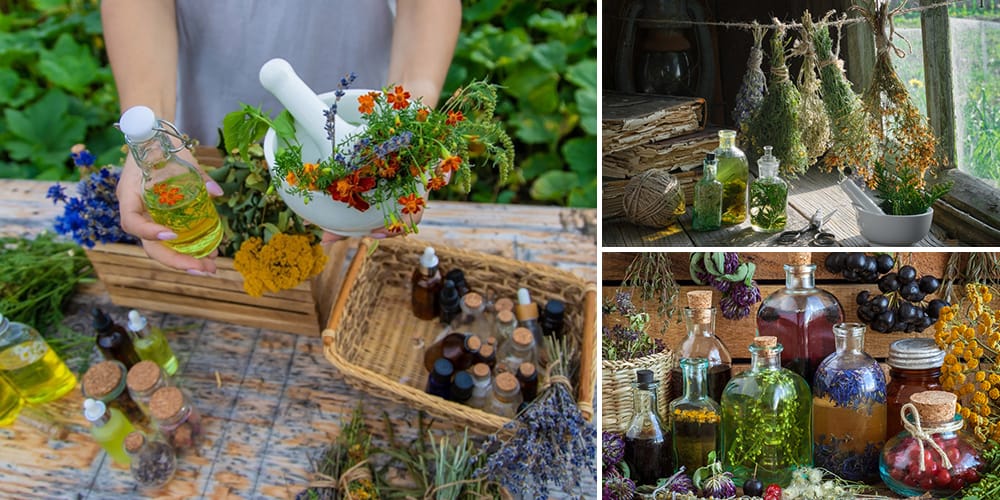
10 Tincture Mistakes You Should Avoid at All Costs
Of all the herbal preparations – capsules, infusions, decoctions – a tincture is by far the most convenient to prepare and take. You only have to prepare it once and take it as needed without the brewing and boiling.
An herbal tincture contains concentrated medicinal properties. It means that you only need a small amount of it compared to when you drink that particular herb as tea. Tinctures are also fast-acting. When ingested, it enters the bloodstream within a few seconds for quick absorption in the body. Plus, they have a long shelf life and may take a while to degrade if prepared and stored properly. But let’s see what are the common tincture mistakes that people often make.
Tincture Mistakes to Avoid
Tinctures are prepared by macerating or soaking the herb in solvents for a couple of weeks. Alcohol like vodka is the most commonly used solvent or menstruum. You may also prepare non-alcoholic tincture using apple cider vinegar or vegetable glycerin, and the resulting product is aptly known as herbal extract.
Preparing tinctures at home is possible using any available herbs in your locality. Many herbs can be used as long as they are not recognized as toxic plants.
Herbs and plants have different therapeutic properties. So, you can prepare tinctures for various uses such as painkillers, antiseptics, laxatives, expectorants, etc.
To make the most out of homemade tinctures, they need to be prepared properly. A tincture is very easy to make. All you need is some herb, menstruum and some patience to wait for it to infuse.
Unfortunately, it is also very easy to go wrong with the preparation which may affect the overall potency and shelf-life of the final product.
Choosing the Wrong Herb
Not all herbs are safe for making tinctures. Some plants have certain parts that are unsafe for ingestion. Ginkgo seeds, for example, may cause seizures and death when ingested. When preparing a tincture, do some research on the herb’s toxicity before using it, especially if you are foraging them from the wild.
Not Drying Fresh Herbs
Herbalists are still debating on fresh vs dried herb forms to use for tinctures. There is no hard rule for it because some plants are best used fresh while others make better tinctures when dried.
What some people may fail to do when preparing tincture is macerating fresh herbs without drying them. Fresh herbs contain water and moisture which may affect the efficiency of extraction and produce a weaker tincture.
If you use fresh herbs, it is best to dehydrate them first. You can sun-dry or air-dry them just until they are brittle. They are ready for tincture if the leaves snap when bent or the seeds and flowers begin to fall off.
Wrong Alcohol Concentration
The next mistake that can be committed in making a homemade tincture is the wrong concentration. The ratio of the menstruum will depend on whether you are using the fresh or dried plant form.
The standard ratio in preparing tincture is 1 part dried herbs to 5 parts alcohol. For fresh herbs, the concentration is 1 part fresh herb to 2 parts menstruum. Basically, you will need fewer dried herbs than you would with fresh.
Some people may use the folk method of preparing a tincture where they do not rely on measurements. They simply estimate the amount of herbs, filling about 1/3 to ½ of the container and adding menstruum to cover them completely. This is a simple process but it may affect the concentration and dosing of the tincture.
Using Poor Alcohol Choice
Vodka that contains 80-proof or 40% alcohol is widely used in tinctures. But, did you know that you can also use your favorite alcohol as a solvent?
Wines, rum, brandy, gin, whiskey and grain spirits are good menstruum for alcohol tinctures. However, you will need to consider it carefully since a certain alcohol may only be ideal for particular plant forms.
Wine with at least 12.5% ABV is good for delicate herbs like basil, catnip, elderflower and blue lotus. Do not use wine for herbs with high water content.
Spirits are good for dried plants, roots and resinous herbs. They are also great for high water content plants as they can help prevent bacterial and fungal growth.
Additionally, you should avoid using alcohol with more than 50% or 100-proof content. At this concentration, the tincture is damaging to the liver and kidney.
Not Shaking the Solution
Tinctures require at least six weeks for the herbs to soak. In between, it also requires a commitment to shake the jar daily to prevent the herbs from rotting. Shaking the jar is essential especially if you are using fresh plants. It enables the plant materials to be fully submerged in the menstruum and prevents the formation of fungi that may cause it to rot.
Not Garbling
Garbling is the process of removing debris and unwanted plant parts. In many herbs, the flowers, leaves or seeds are the medicinal parts. With woody plants, you may need either the bark or roots. The dead leaves and flowers, woody pith and stems have little medicinal constituents and should be removed.
Not Considering the Plant Maturity
The problem in preparing store-bought dried herbs is the difficulty in determining the age of the dried plant used. If you dry your own herbs, you can tincture them almost immediately, before they lose potency.
When foraging for fresh leaves for tincture, the best time for harvesting them is in spring before the flowers bloom. The flowers are best harvested in mid-spring before they produce seeds. If you want the plant roots, you can forage them after the first frost.
Not Cutting the Herbs
Chopping the herbs into pieces increases the surface area and allows the alcohol to contact more areas. It will result in higher medicinal properties for the tincture.
Some herbalists may suggest throwing the plants into the blender. However, some argue that it will only break the herbs at the cellular level and compromise the tincture quality. The best way of cutting herbs for tincture is using scissors, especially with delicate plants. Chopping delicate plants on a cutting board may only make them lose some of their compounds and color.
Improper Time
Tinctures need to sit for at least 4 weeks to extract all their healing properties. You will notice that the color of the liquid changes to indicate the chemical change taking place. The longer the solution sits, the more potent the tincture it produces.
However, you may not want to let it sit for too long. Leaving the tincture for more than 8 weeks will result in a bitter product. It will also produce a precipitate or some floaty sheen that cannot be removed by sieving.
Improper Storage
Herbal extracts and tinctures are kept in a cool and dry place as they steep. It should also be away from direct sunlight and heat sources to prevent the contents from deteriorating. Heat and humidity can affect the stability and potency of tinctures and any pharmaceutical products.
You should also store the final product properly for the same reason. If possible, use amber-colored bottles to protect the content from UV light.
When stored properly in a cool, dark place away from direct sunlight and heat sources, an alcohol tincture can last for several years.
An apple cider vinegar tincture typically has a shorter shelf life compared to an alcohol tincture due to the lower alcohol content and acidic nature of apple cider vinegar. However, when stored properly, an apple cider vinegar tincture can still last for a significant amount of time. Typically, an apple cider vinegar tincture can last for about 1 to 2 years. A glycerin tincture, also known as a glycerite, typically has a shorter shelf life, for about 6 months to 1 year.
Find out more in The Holistic Guide to Wellness, where you can read about the best natural remedies to take for a variety of ailments.
Lavender and Chamomile Sleep Tincture
Ingredients:
- 2 tbsp dried lavender blossoms
- 2 tbsp dried chamomile flowers
- 1 ¼ cups 80-proof vodka
Steps:
- Fill a pint-size mason jar with the dried lavender and chamomile.

- Pour the vodka over the dried flowers to cover them completely.

- Seal the jar and set aside in a cool and dark place for at least a month. Shake the jar regularly.

- After about a month, take the jar and filter the tincture using a fine cloth or sieve and transfer it to a dropper bottle.
How to Use
Take a dropperful of the tincture and add it to a quarter-cup of water or beverage.








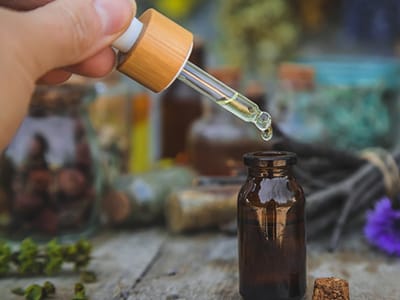
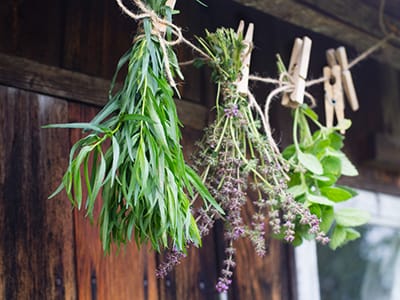
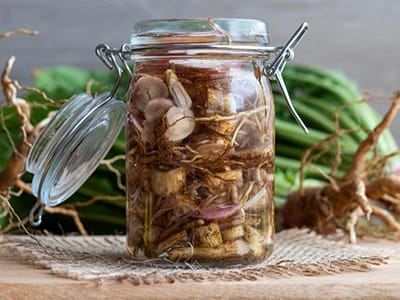
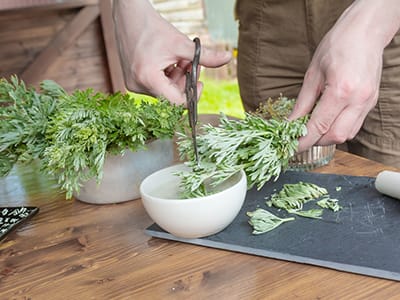
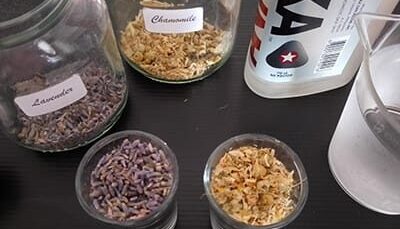
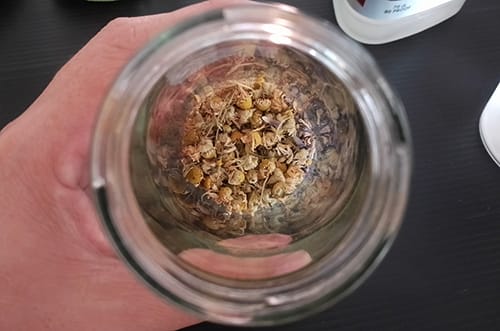
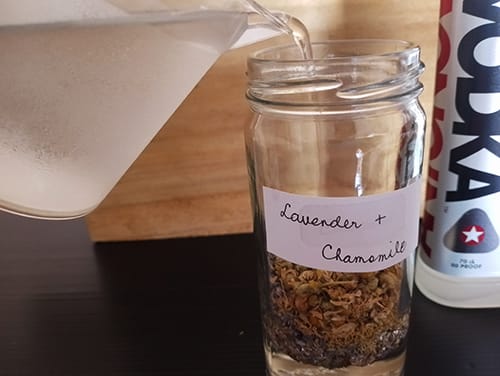
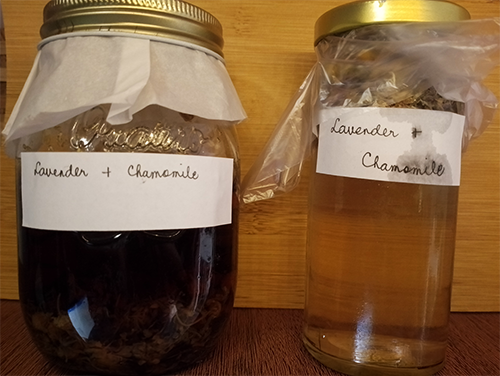
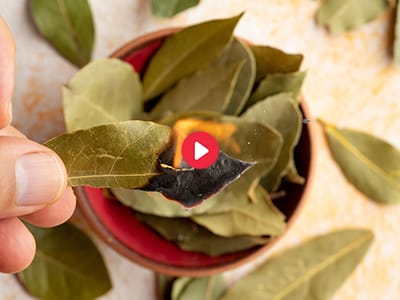

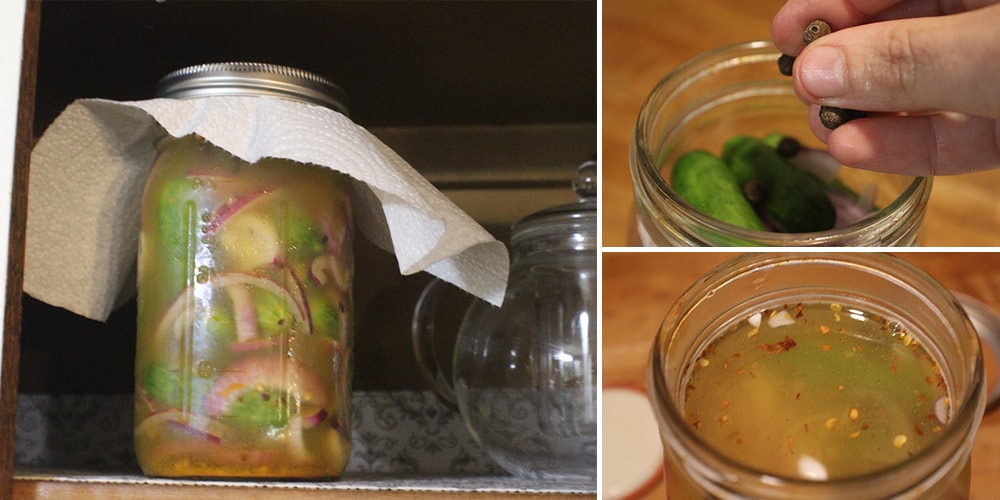
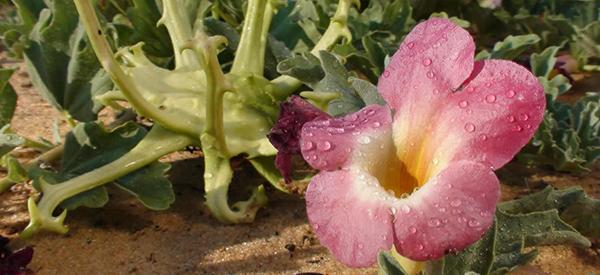
Very Good Information Thank You.
I do have a question,
I have a Mullein Tincture that has been “Steeping for 5 Months. I have shaken it periodically, but I just have not had the time to bottle it.
is it still Good?
Tom, if it doesn’t look moldy or smell bad, it’s good! I have just recently started using my mullein leaf tincture which I began back in Aug.of 2022, which makes it a year and a half old, and I remembered to shake it only a couple of times. (Yep, I just plain forgot about it.) I recently got sick with phlegmy crud so I dug it out of the cupboard when I needed an expectorant. Maybe I was lucky it was not moldy or “bad” in any way. How I had prepared it, was I cut up fresh mullein leaves finely with a knife (in fine shreds), and they’ve been “steeping” in 40% (80 proof) vodka all this time. The leaves were clean from my organic garden so I didn’t wash them first, but if I had, I would have let them sit overnight to thoroughly dry before tincturing. To use this batch of mullein tincture, I have actually just been skimming the tincture right off the top, avoiding the leaves. Yeah, obviously I still need to strain it, but I was feeling pretty puny when I dug it out of the cupboard. Cheesecloth probably is too loosely woven unless you use many layers….you want to strain out all the little fine, fuzzy hairs. I’ve used an old white T-shirt as well as paper towels to strain tinctures before. I add 1/4 tsp. tincture to a half glass of water and drink it down, and I can barely taste it. What I do barely taste, does not taste bad. Doc Jones from the Homegrown Herbalist says it doesn’t decrease its effectiveness if you drink it in water…just get it in you.
I noticed Natural Grocers is selling 1 oz. of mullein tincture for $11.00. I will have a couple of cups of it after I strain it and my only expense was about a third of a bottle of $13 generic Kirkland vodka from Costco. I re-purposed an old spaghetti jar that I sterilized in the dishwasher.
My friend went through a County Extension Master Gardener program and was taught that mullein is a “bad” invasive weed. Birds or wind planted mullein in my garden, and she was horrified I let it grow! She’s correct it can spread where you don’t want it, but nothing a little weeding won’t take care of. (And then tincture the leaves!) Or cut off the seed heads before the seeds spread. I prefer to let it flower, and I gather the little yellow flowers to infuse along with garlic cloves in olive oil for ear ache drops.. I live along the Front Range of Colorado, and mullein grows wild in natural grassy areas here.
Tip: I use a black sharpie and removable painter’s tape to label what it is and the date.
Hi, just wanted to tell you that I use cut up bed sheets. They have a nice tight weave and can be cut into 12″, 14″ or 16″ squares. Mostly, we just use brute muscle to squeeze out the tincture. I have a screw press, but, I don’t use it because we bent the frame trying to get that last 5-10% out of it. I have plans to make a hydraulic press, but, I haven’t got around to it. You know how it is! BTW, I use sharpie and blue painter’s tape too, at least while things are macerating.
Henry, old bed sheets cut up into squares…..Brilliant! Thanks!
Brilliant can we still use them if we wash them in bleach all of the time???
Thank You. I did not think it would be Bad.
Hi this is an old post but I kept it for reference. In the article it says fresh herbs must be dried until the leaves snap on bending. You made tincture with overnight dried mullein leaves.
I’m little confused 🙁
Hi Henry – just looking at Henriette’s website and I can’t find the Materia Medica you mentioned there…would you possibly be able to put a link up? thanks!
Cutup bed sheets is genius! Now I know what to do with those unwanted sheets. I love “The Lost Herbs”!😉
And the ear ache drops is the next thing to make.🫡